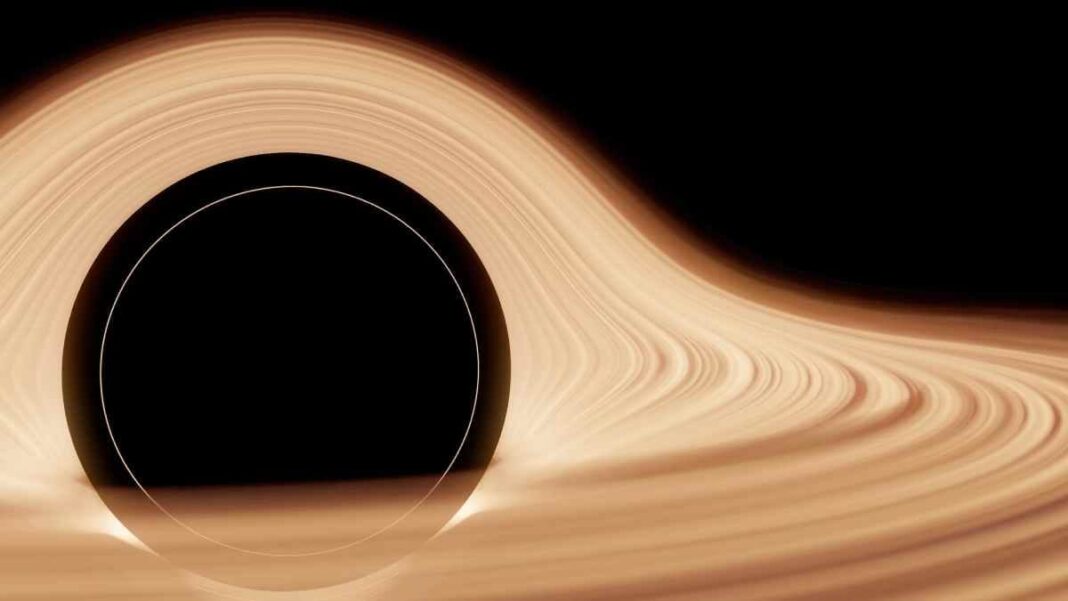UNITED STATES: A recent study reveals that one of the most powerful galaxies in the very early universe contains a rapidly expanding black hole.
Rapidly growing black hole discovered
According to astronomers from the University of Texas and the University of Arizona, the finding of the galaxy and the black hole at its centre offered fresh information on how the first supermassive black holes formed.
The team used data from the Atacama Large Millimeter Array (ALMA), a radio observatory in Chile, to find that the COS-87259 galaxy contains this new supermassive black hole.
It is very extreme, forming stars at a rate 1000 times that of our own Milky Way and containing more than a billion solar masses worth of interstellar dust, according to the study.
The supermassive black hole that is expanding at the galaxy’s centre and the intense burst of star formation both contribute to the galaxy’s brightness, according to the study. The new research has been published in the Royal Astronomical Society’s journal, Monthly Notices.
It is thought to be a new kind of primordial type that is densely covered in cosmic “dust,” which causes almost all of its light to be released in the mid-infrared region of the electromagnetic spectrum, the researchers added.
Scientists have also discovered that this expanding supermassive black hole, also known as an active galactic nucleus, is producing a powerful jet of material that is travelling across the host galaxy at close to the speed of light.
Nearly all galaxies now include black holes at their centres, some of which have masses millions to billions of times greater than our own Sun. Scientists are still unsure of how these supermassive black holes first formed, in part because several of these phenomena were discovered when the universe was still extremely young.
We perceive them as they were in the past—in this case, 750 million years after the Big Bang, or roughly 5% of the universe’s current age—because the light from these sources takes so long to reach us.
This new object was discovered in this study, and what is particularly amazing about it is that it was found over a relatively small patch of sky typically used to find similar objects, less than 10 times the size of the full moon, suggesting that there may be thousands of other sources like it in the very early universe.
According to the study, this was totally contrary to earlier results. In the very early universe, quasars—active black holes that are comparatively unobscured by cosmic dust—were the only other class of supermassive black holes we were aware of.
At distances similar to COS-87259, these quasars are incredibly rare; the entire sky only contains a few tens of them.
The unexpected finding of COS-87259 prompts a number of inquiries concerning the prevalence of extremely early supermassive black holes and the kinds of galaxies in which they generally emerge.
These findings imply that early supermassive black holes were frequently shrouded in dense dust, possibly as a result of the vigorous star formation occurring in their host galaxies.
“This is something others have been forecasting for a few years now, and it’s really exciting to see the first direct observational evidence supporting this scenario,” said Ryan Endsley, the study’s lead author from the University of Texas.
Similar objects like Arp 299 have been discovered in the more immediate, present-day universe. In this system, two galaxies are colliding, causing a powerful starburst and significant obscuration of the enlarging supermassive black hole in one of the galaxies.
No one anticipated seeing this kind of object in the very early universe, but its discovery contributes to a better understanding of how the most massive galaxies originally developed and how billions of solar mass black holes were able to emerge so early in the history of the universe.
Also Read: NASA’s Chandra X-ray Observes Black Holes That Are about to Collide



